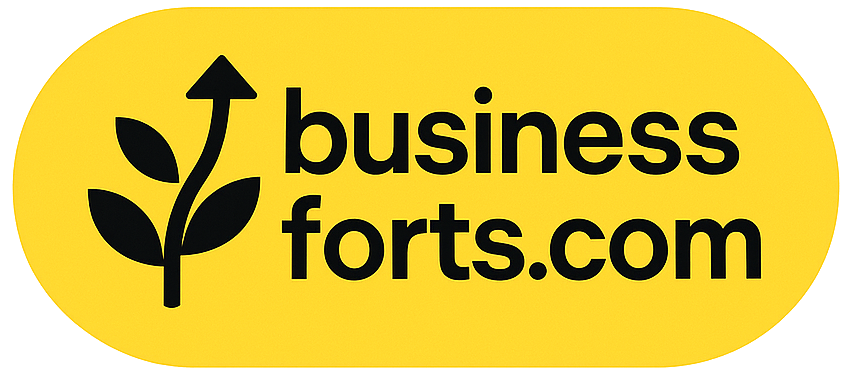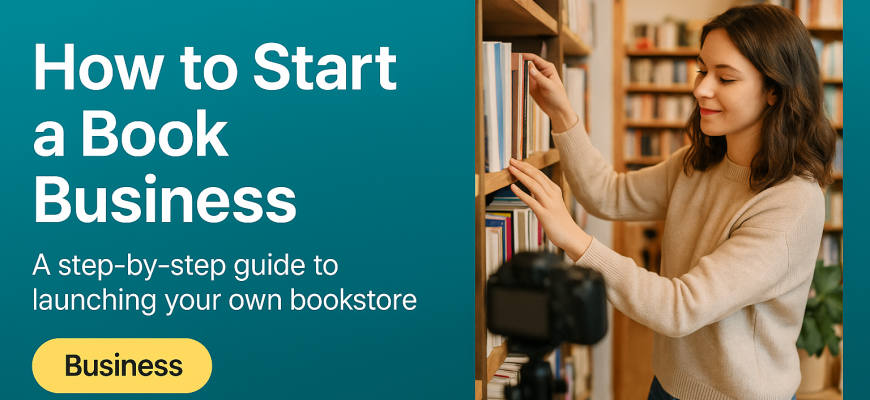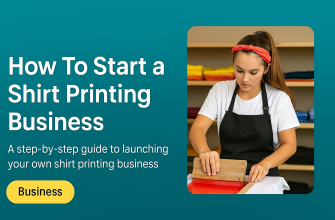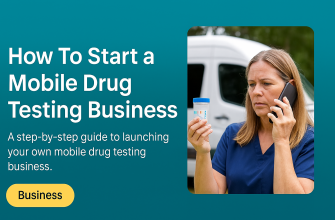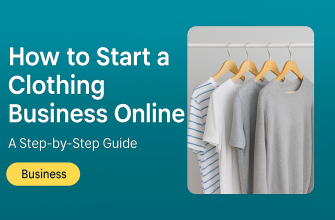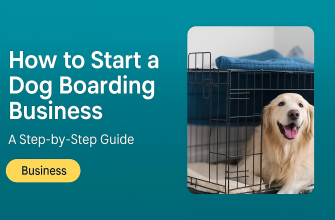Начать книжный бизнес — мечта многих заядлых читателей и начинающих предпринимателей. Как человек, который помог многим женщинам превратить их увлечения в прибыль, я знаю волнение от организации полок, полных книг, и знакомства читателей с историями. Но успешный книжный бизнес также требует тщательного планирования, исследования и стратегии. В этом руководстве я проведу вас через каждый шаг — от исследования вашего рынка до поиска инвентаря, выбора способа продажи, создания бренда и маркетинга — чтобы вы могли запустить бизнес с доступными шагами запуска и реалистичным путем к прибыльности.
- Почему книги? Понимание рынка
- Шаг 1: Выберите свою нишу и спланируйте свой бизнес
- Шаг 2: Найдите источники книг
- Шаг 3: Решите, где продавать
- Шаг 4: Создайте свой бренд и опыт
- Шаг 5: Запуск и продажа ваших книг
- Шаг 6: Маркетинг и расширение охвата
- Шаг 7: Мониторинг прибыльности и роста
- Уполномоченный и настойчивый
Почему книги? Понимание рынка
Мировой книжный рынок остается сильным и стабильно растет. В 2021 году он оценивался примерно в $138 млрд и, как ожидается, будет скромно расти каждый год. Цифровые книги (электронные и аудиокниги) являются самым быстрорастущим сегментом, в то время как печатные книги продолжают хорошо продаваться, особенно в образовательных и профессиональных нишах. Это означает, что на рынке есть место как для физических, так и для цифровых предложений.
Маркетинговые исследования — это ваша основа. Они дают представление о вашей целевой аудитории, локальной насыщенности и трендовых форматах. Например, выясните, жаждут ли читатели в вашем регионе больше детских книг, любовных романов или руководств по здоровому образу жизни. Изучите отраслевые отчеты и опросы, чтобы выявить нишевые возможности (например, подписные книжные коробки или наборы для изучения языка). Книжная индустрия остается сильной, но многие новые магазины находят лучшие перспективы в расширении ниш — обслуживая независимых авторов, специальные жанры или аудиокниги.
Шаг 1: Выберите свою нишу и спланируйте свой бизнес
Успешные книжные магазины обычно сосредоточены на определенной нише или теме. Возможно, вы будете специализироваться на мемуарах женщин, редких коллекционных изданиях, электронных книгах по саморазвитию или детской художественной литературе. Четкий фокус делает ваш маркетинг более эффективным и создает запоминающуюся индивидуальность. Как отмечают эксперты, нишевые книжные магазины преуспевают, предлагая то, чего не могут предложить крупные конкуренты: персонализированный, тщательно подобранный опыт.
Планируя, подумайте о своих ресурсах и целях. Вы начнете в первую очередь онлайн или же задумаете уютный местный магазин? Составьте простой план: определите свою миссию, наметьте стартовые затраты и установите первоначальные цели (например, целевое количество продаж или подписок на рассылку). Не стесняйтесь начинать с малого. Вы можете начать с интернет-магазина или киоска на рынке, прежде чем заключать долгосрочную аренду. Этот бережливый подход позволяет вам протестировать свою концепцию и сохранить низкие затраты.
Шаг 2: Найдите источники книг
Далее соберите свой инвентарь, используя методы, соответствующие вашему бюджету:
-
Оптовые и издательские счета: Многие магазины покупают новые книги у оптовиков или дистрибьюторов (например, Ingram или Baker & Taylor), которые продают их со скидками за объем. В качестве альтернативы вы можете позвонить издателям напрямую; небольшие независимые издательства часто находят издателей, готовых продавать всего несколько экземпляров за раз. Такая гибкость означает, что вы можете продавать разнообразные издания без крупных заказов.
-
Подержанные и редкие книги: Продажа подержанных книг (старинных, коллекционных или бережно использованных) может принести более высокую прибыль, поскольку ваши затраты на приобретение низкие. Покупайте их в комиссионных магазинах, на распродажах имущества, библиотечных распродажах или онлайн-аукционах. Создание уникальной коллекции подержанных книг может привлечь любителей книг и увеличить прибыль.
-
Печать по требованию (POD): Используйте услугу POD, чтобы книги печатались только по заказу. Это исключает риск инвентаризации. Такие службы, как Lulu Direct или IngramSpark, подключаются к вашему интернет-магазину для автоматического управления печатью и доставкой.
-
Цифровые названия: Для электронных и аудиокниг рассмотрите возможность самостоятельной публикации или лицензирования прав. Такие платформы, как Kindle Direct Publishing от Amazon или приложение Easy Digital Products, позволяют продавать цифровые файлы без физического запаса. Вы можете опубликовать собственную электронную книгу или сотрудничать с авторами и получать комиссию с продаж.
-
Сопутствующие товары: Увеличьте доход, предлагая аксессуары или наборы. Закладки, сумки-шопперы, специально подобранные подарочные наборы или канцелярские товары могут значительно повысить среднюю стоимость продажи.
Стремитесь поддерживать инвентарь управляемым. Закажите сначала несколько экземпляров каждого названия, чтобы посмотреть, что вызовет отклик. Помните об условиях: некоторые издатели взимают дополнительную плату за возвратный товар. На практике многие небольшие книжные магазины заказывают книги как невозвратные, чтобы получить лучшие скидки.
Шаг 3: Решите, где продавать
Выбирайте каналы, которые соответствуют вашему бюджету и аудитории:
-
Интернет-магазин (Ваш сайт): Веб-сайт (на таких платформах, как Shopify, WooCommerce, Squarespace или Wix) — это недорогой способ продавать книги. Современные инструменты электронной коммерции упрощают настройку — на самом деле, эксперты отмечают, что вы можете создать базовый магазин за считанные минуты. Прежде чем вы даже начнете закупать товары, запустите целевую страницу или присутствие в социальных сетях, чтобы собирать подписки по электронной почте и вызывать ажиотаж. Онлайн-продажи позволяют вам охватить читателей с самого первого дня.
-
Интернет-магазины: Amazon и Etsy дают вам мгновенный доступ к большой аудитории. Например, Kindle Direct Publishing and Marketplace от Amazon позволяет вам размещать электронные и печатные книги для миллионов покупателей. Плюсом является встроенный трафик; минусом — жесткая конкуренция и сборы. Bookshop.org — еще один вариант — это некоммерческая платформа, которая поддерживает независимые книжные магазины, разделяя комиссионные с продаж. Многие владельцы магазинов делают и то, и другое: используют Amazon для объема и ведут собственный сайт для брендинга и более высокой маржи.
-
Физический магазин: Традиционный магазин может стать общественным центром, где собираются читатели. Если вы выберете этот вариант, выберите место с хорошей проходимостью или рядом с целевыми клиентами. Помните, что арендная плата и накладные расходы складываются. Если полноценный магазин поначалу невозможен, начните с временных магазинов или рыночных киосков. Временные магазины и местные рынки — это недорогие способы протестировать идеи для розничной торговли. Shopify даже предлагает использовать временные магазины в качестве веселого торжественного открытия.
-
Гибридный подход: Многие книготорговцы комбинируют методы. Например, продают в основном онлайн, но устанавливают стенд на ярмарках или сотрудничают с кафе, чтобы продавать мини-выборку. Это распределяет риски и позволяет вам время от времени встречаться с клиентами лично.
Лучший подход зависит от вас. Только онлайн-продажи требуют меньших накладных расходов, но даже эпизодическое личное присутствие (например, местные мероприятия) повышает лояльность. Планируйте свою логистику (хранение запасов, доставку, POS) в соответствии с выбранными вами каналами.
Шаг 4: Создайте свой бренд и опыт
Ваш бренд — это то, что делает ваш книжный магазин уникальным. Обратите внимание на следующие элементы:
-
История и ценности бренда: Почему вы открыли этот книжный магазин? Возможно, чтобы отстаивать различные мнения, поддерживать местных авторов или делиться своей давней любовью к чтению. Создайте историю вокруг своей миссии. Увлекательное повествование (ваше «почему») находит отклик у клиентов, ищущих бизнес с душой.
-
Визуальная идентичность: Выберите запоминающееся название, разработайте логотип и выберите цветовую схему, которая соответствует вашей нише. Ваш магазин веселый и яркий (например, детские книги) или элегантный и интеллектуальный (литературные произведения)? Используйте последовательные визуальные эффекты на своем веб-сайте, в социальных сетях и на любой витрине или упаковке.
-
Фокус на нише: Чётко определите свою специализацию. Если ваша тема — здоровье и благополучие, подчеркните это в своём брендинге и кураторстве. Shopify советует «гипер-сосредоточенный» – вместо того, чтобы продавать все виды книг, станьте известными, чья работа в каком-то одном жанре или стиле является исключительно успешной.
-
Опыт клиентов: Курируйте процесс покупок. Лично это может означать удобные уголки для чтения, тематический декор или уголок кафе. В Интернете вы можете предложить персонализированные книжные викторины или индивидуальные беседы с рекомендациями. Маленькие штрихи — например, витрины с выбором товаров персоналом, персонализированные заметки в заказах или бонусы за лояльность (карты с марками или эксклюзивные мероприятия) — позволяют клиентам чувствовать себя ценными.
-
Создание сообщества: Привлекайте читателей за пределы транзакций. Начните рассылку с рекомендациями по чтению и обновлениями магазина. Проводите мероприятия (рассказы, автограф-сессии, книжные клубы) онлайн или в магазине. Создайте онлайн-сообщество (группу в Facebook или хэштег), где читатели обсуждают книги. Создание лояльного сообщества — ключ к долгосрочному успеху.
Ваш бренд — это не просто логотип, это целый опыт. Чёткая идентичность и превосходный сервис заставят читателей возвращаться к вам снова и рассказывать о вас друзьям.
Шаг 5: Запуск и продажа ваших книг
Разработав бренд и инвентарь, настройте операции по продажам:
-
Настройка магазина: Завершите макет вашего веб-сайта или физическое расположение магазина. Убедитесь, что списки книг имеют понятные названия, описания и изображения обложек. Организуйте свой выбор логически (по жанру, возрастной группе, теме), чтобы покупатели могли легко просматривать.
-
Цены и наценки: Книги часто имеют скромные наценки. Данные отрасли показывают, что независимые книжные магазины в среднем имеют валовую прибыль около 30–50% (это выручка за вычетом стоимости инвентаря). После оплаты аренды, коммунальных услуг и других расходов чистая прибыль может составлять всего несколько процентов. Чтобы повысить прибыльность, рассмотрите дополнения: объединяйте бестселлеры с фирменной закладкой или предлагайте премиальные коробочные наборы. Каждая небольшая надбавка помогает итоговому результату.
-
Оплата и исполнение: Предлагайте удобные варианты оплаты (кредитные карты, PayPal и т. д.) и устанавливайте четкие правила доставки. Если вы работаете в Интернете, определите тарифы на доставку (фиксированная плата или бесплатно при достижении порогового значения) и время доставки. Для продаж в магазине используйте надежную систему POS или мобильный считыватель карт. Планируйте упаковку и доставку: запаситесь прочными коробками и лентой или воспользуйтесь услугой фулфилмента, если вы быстро растете.
-
Акция перед запуском: Перед открытием (или в день запуска) создайте ажиотаж. Разместите предварительные фотографии в социальных сетях и по электронной почте. Предложите специальную акцию (например, скидку или бесплатную сумку) первым подписчикам. Рассмотрите возможность «мягкого» запуска для друзей и семьи, чтобы сгладить любые недочёты. Цель — подготовить заинтересованных клиентов к официальному открытию.
Начиная с небольшого запуска (даже с нескольких десятков наименований), вы снижаете затраты и быстро осваиваете новые технологии. Вы всегда можете масштабировать проект по мере роста спроса.
Шаг 6: Маркетинг и расширение охвата
Маркетинг — это то, как читатели находят вас. Используйте сочетание стратегий:
-
Цифровой маркетинг: Запускайте целевую рекламу, чтобы охватить любителей книг. Например, Google Ads с такими ключевыми словами, как «книжный магазин рядом со мной» или Facebook/Instagram-реклама, ориентированная на интересы (например, «фантастические романы»). Регулярно публикуйте интересный контент: делитесь обзорами книг, фотографиями новых поступлений или интервью с авторами. Начните рассылку по электронной почте со списками для чтения и предложениями — это сохранит вовлеченность вашей аудитории. И заявите о бесплатных объявлениях о своей компании в Google, Yelp и библиотечных каталогах для лучшей локальной видимости.
-
Контент и сообщество: Станьте литературным ресурсом. Ведите блог о книгах в вашей нише или снимайте короткие видео, обсуждая тренды. Участвуйте в таких платформах, как Goodreads, или местных группах в Facebook (сосредоточьтесь на создании ценности, а не только на рекламе). Сотрудничайте с общественными организациями: проведите обсуждение книги в библиотеке или школе или спонсируйте местное мероприятие для писателей.
-
Традиционный/локальный маркетинг: Используйте проверенные местные приемы. Распространяйте листовки или открытки в кафе и общественных центрах, чтобы объявить об открытии или мероприятиях. Разместите привлекательную витрину или вывеску на тротуаре. Проводите или посещайте местные ярмарки и фермерские рынки — раздавайте фирменные закладки или сумки, чтобы распространить информацию. Каждая местная связь помогает.
-
Реферальные программы и программы лояльности: Поощряйте своих клиентов распространять информацию о вас. Предложите небольшое вознаграждение (например, подарочную карту) каждому, кто порекомендует вас другу. Создайте карту лояльности (купите 10 книг, получите 1 бесплатно) для поощрения постоянных клиентов. Отзывы довольных клиентов — это «самый ценный маркетинг из всех».
-
Последовательность: Самый эффективный маркетинг — непрерывный. Установите график (например, еженедельные посты в социальных сетях, ежемесячная рассылка) и придерживайтесь его. Отслеживайте результаты (спрашивайте новых клиентов, как они вас нашли, используйте аналитику веб-сайта) и корректируйте свой подход. Со временем постоянный охват увеличит вашу аудиторию и продажи.
Сочетание онлайн-активностей с реальным взаимодействием с сообществом поможет вам постепенно сформировать лояльную аудиторию. Чаще делитесь своей страстью — это ваш лучший маркетинговый инструмент.
Шаг 7: Мониторинг прибыльности и роста
Поймите, что продажа книг часто начинается медленно. Анализ отрасли показывает, что независимые книжные магазины часто заканчивают с однозначной чистой прибылью, поэтому осторожное управление имеет ключевое значение. Помните эти советы:
-
Начать бережливое производство: Поначалу поддерживайте низкие фиксированные расходы. Продажи онлайн из дома или с частичной занятостью означают отсутствие аренды и высоких зарплат. Постепенно модернизируйте свой бизнес по мере роста продаж.
-
Финансы трека: Тщательно записывайте все продажи и расходы. Используйте простое бухгалтерское программное обеспечение или электронные таблицы. Знайте свою точку безубыточности (сколько книг вам нужно продать, чтобы покрыть расходы). Эта ясность поможет вам ставить реалистичные цели и принимать разумные решения.
-
Диверсификация доходов: Не полагайтесь исключительно на продажи отдельных книг. Предлагайте услуги или продукты, такие как подписка на книжный клуб, писательские семинары или фирменные товары. Каждый дополнительный поток может компенсировать узкую маржу на книгах.
-
Ориентация на клиентов: Отличный сервис окупается. Приветствуйте постоянных клиентов, предлагайте персональные рекомендации и благодарите за покупки. Поощряйте отзывы и рекомендации — довольные покупатели, рассказывающие о вашем товаре друзьям, могут стать постоянным источником новых клиентов.
-
Адаптируйтесь и развивайтесь: Используйте данные о продажах, чтобы решить, что заказать повторно. Если какой-то жанр быстро раскупается, увеличьте его запасы. Если что-то задержалось, проведите акцию. Будьте гибкими — вкусы рынка меняются, поэтому будьте готовы к переменам.
Прибыльность может расти медленно, но многие независимые книжные магазины растут стабильно на протяжении многих лет. Празднуйте маленькие победы (первая продажа, первый лояльный клиент) и продолжайте учиться. Каждый шаг вперед — это прогресс на пути к вашей долгосрочной цели успешного, устойчивого бизнеса.
Уполномоченный и настойчивый
Начать книжный бизнес как женщина-предприниматель — это одновременно и сложно, и очень полезно. Вы не просто продаете продукцию; вы воспитываете сообщество читателей. Примите свою уникальную точку зрения и позвольте ей направлять вас на каждом шагу.
Будьте терпеливы и настойчивы. Отмечайте важные события: первую продажу, первый отзыв клиента, первого подписчика на рассылку. Обратитесь за поддержкой к наставникам и коллегам по бизнесу. Помните, что каждый большой успех начинается с первого маленького шага — сосредоточьтесь на следующем правильном шаге.
Ваша страсть к книгам может стать процветающим бизнесом. Действуя по одному шагу за раз и основывая свои усилия на разумном исследовании и реалистичном планировании, вы настраиваете себя на рост. Мечтайте по-крупному, тщательно планируйте и держите своих читателей в сердце. С преданностью и креативностью ваша история книжного бизнеса — ваша.
